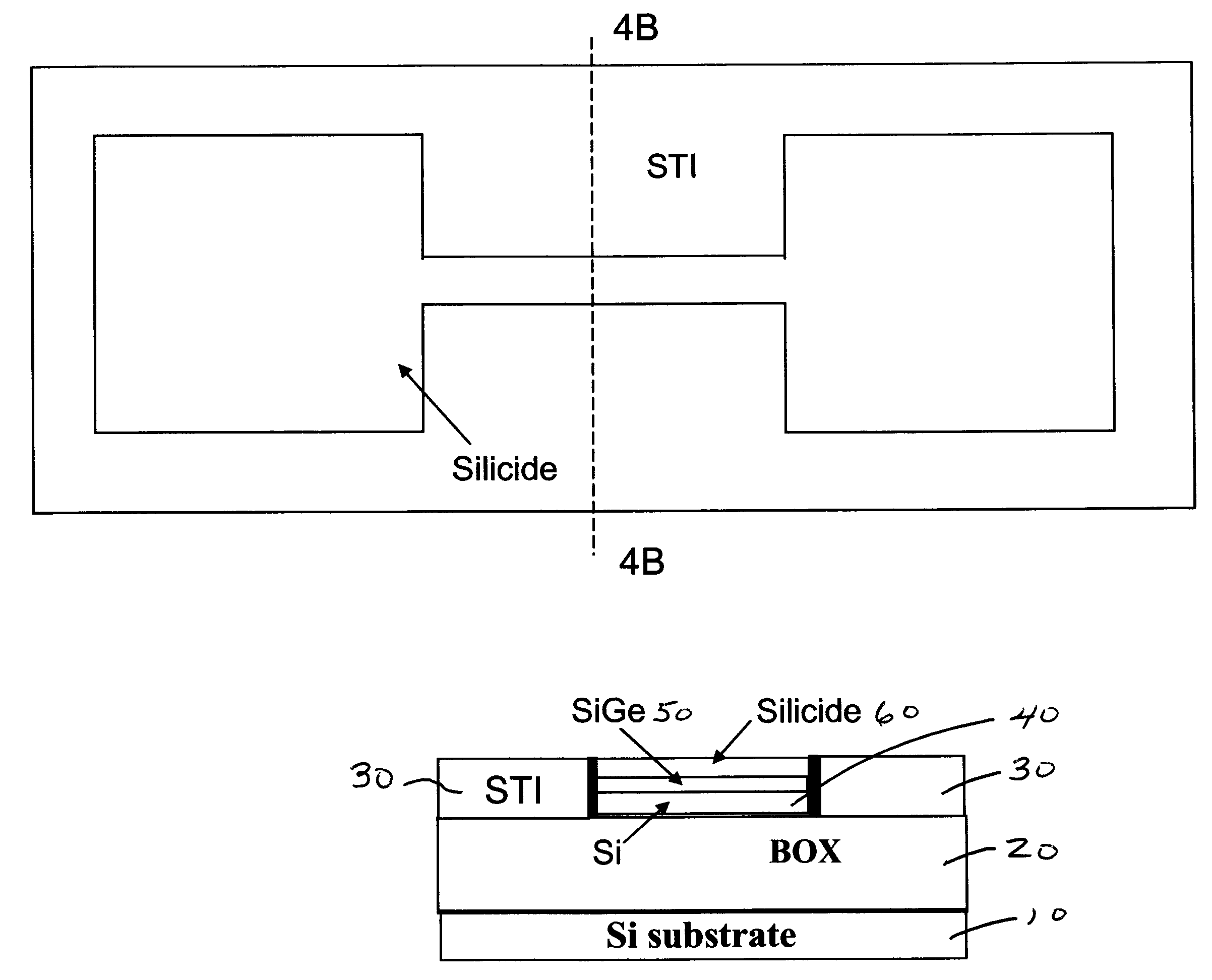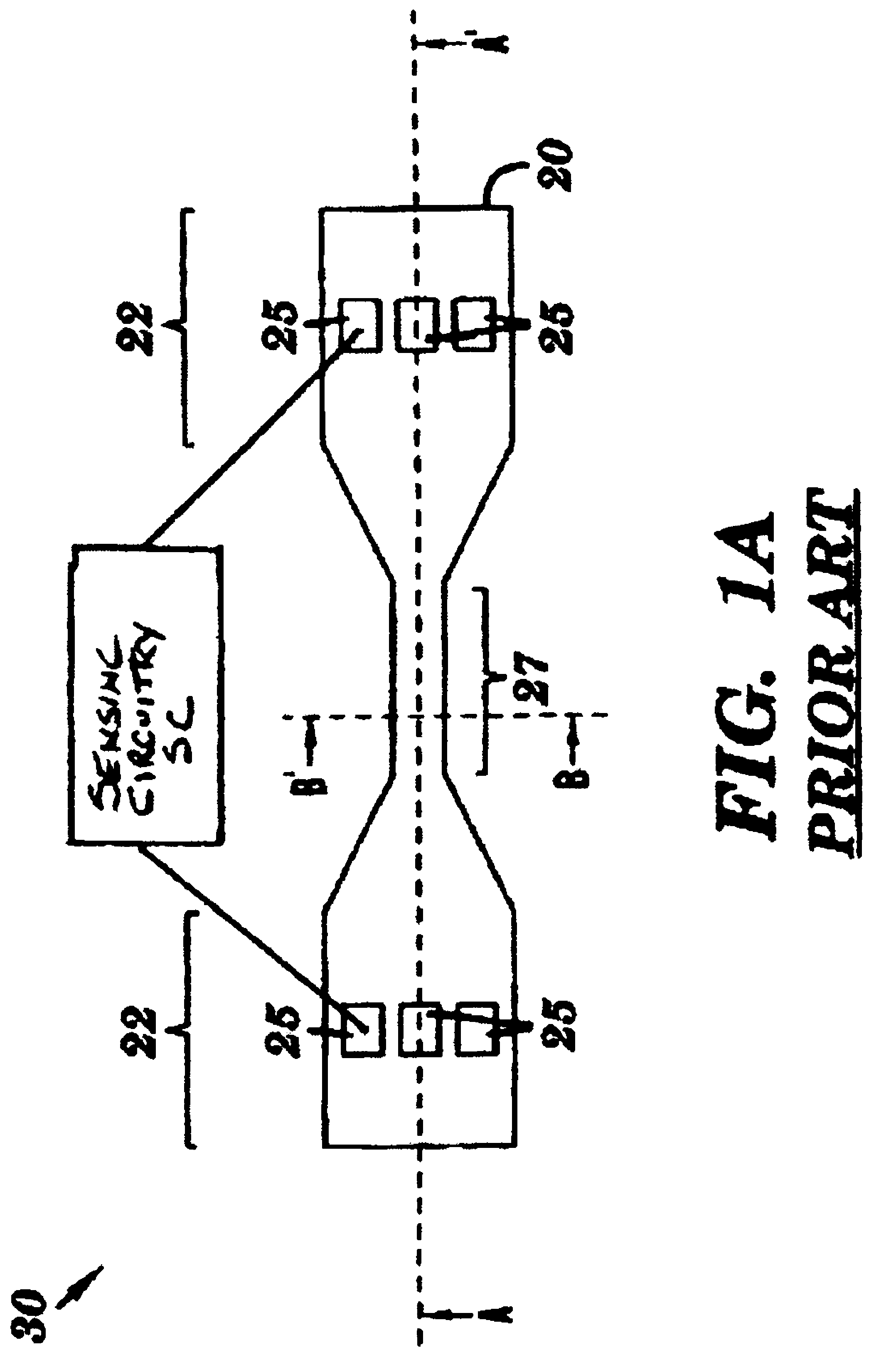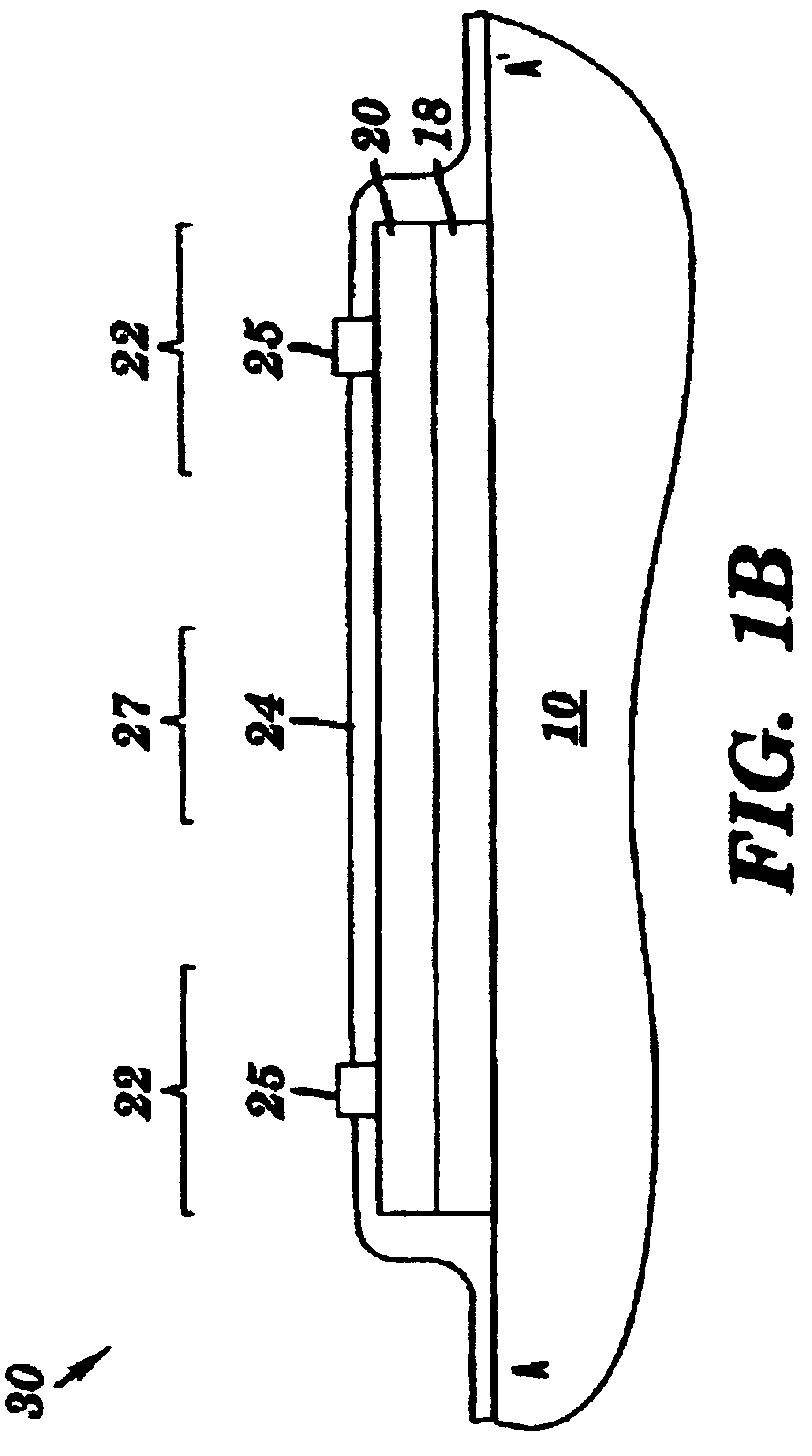eFuse containing SiGe stack
a technology of efuse and stack, applied in the field of efuse, can solve the problems of reliability concerns, damage to the device passivation layer, hole in the passivation layer, etc., and achieve the effects of improving efuse programming, reducing thermal conductivity, and reducing melting temperatur
- Summary
- Abstract
- Description
- Claims
- Application Information
AI Technical Summary
Benefits of technology
Problems solved by technology
Method used
Image
Examples
embodiment one
[0048]FIGS. 2A and 2B illustrate a plan view and a cross-sectional view of an intermediate structure for an electrically programmable fuse (hereinafter referred to as an eFuse) after a conventional shallow trench isolation (STI) formation, by well known techniques which need not be further described in accordance with the first embodiment of the present invention. A pad oxide (˜50 A) 100 is conventionally grown on an SOI wafer 10, 20, 40 and a pad nitride (between 1000 A-2000 A) 110 is deposited as shown using LPCVD (low pressure chemical vapor deposition). After an area (which will form STI regions) is patterned (conventionally) and etched using RIE (reactive ion etching), a thin oxide liner 120 (˜100 A) is thermally grown in a furnace (not shown) and a thin nitride liner (not shown in the figures) is deposited using LPCVD. After that, an oxide to form the STI region is deposited conventionally either by LPCVD or HDPCVD (high density plasma chemical vapor deposition). The extra oxi...
embodiment two
[0053]Now FIGS. 6, 11, 12 and 13 illustrate embodiment 11. Shallow trench isolation is formed following standard CMOS processing. A polycrystalline Si layer 401 and a polycrystalline SiGe layer 501 are deposited as poly conductor layers (by LPCVD). The structure is patterned while poly conductors are patterned by lithography and RIE. After that, nitride spacers 601 are formed by depositing nitride and etching using RIE. The top down and cross sections after the nitride spacer formation are shown in FIGS. 6A and 6B.
[0054]This eFuse structure with more thermally insulating SiGe below enables very easy achievement of a high and uniform final resistance, thus avoiding deleterious effects such as insufficient programming, rupture or agglomeration and avoiding collateral damage to adjacent devices. The inventive fuse structure (e.g. EMBODIMENT ONE or TWO) thus advantageously permits lower programming voltage / current and / or programming time. The eFuse structure can be formed using standard...
PUM
| Property | Measurement | Unit |
|---|---|---|
| thermal conductivity | aaaaa | aaaaa |
| thermal conductivity | aaaaa | aaaaa |
| Thermal diffusivity | aaaaa | aaaaa |
Abstract
Description
Claims
Application Information
 Login to View More
Login to View More - R&D
- Intellectual Property
- Life Sciences
- Materials
- Tech Scout
- Unparalleled Data Quality
- Higher Quality Content
- 60% Fewer Hallucinations
Browse by: Latest US Patents, China's latest patents, Technical Efficacy Thesaurus, Application Domain, Technology Topic, Popular Technical Reports.
© 2025 PatSnap. All rights reserved.Legal|Privacy policy|Modern Slavery Act Transparency Statement|Sitemap|About US| Contact US: help@patsnap.com



